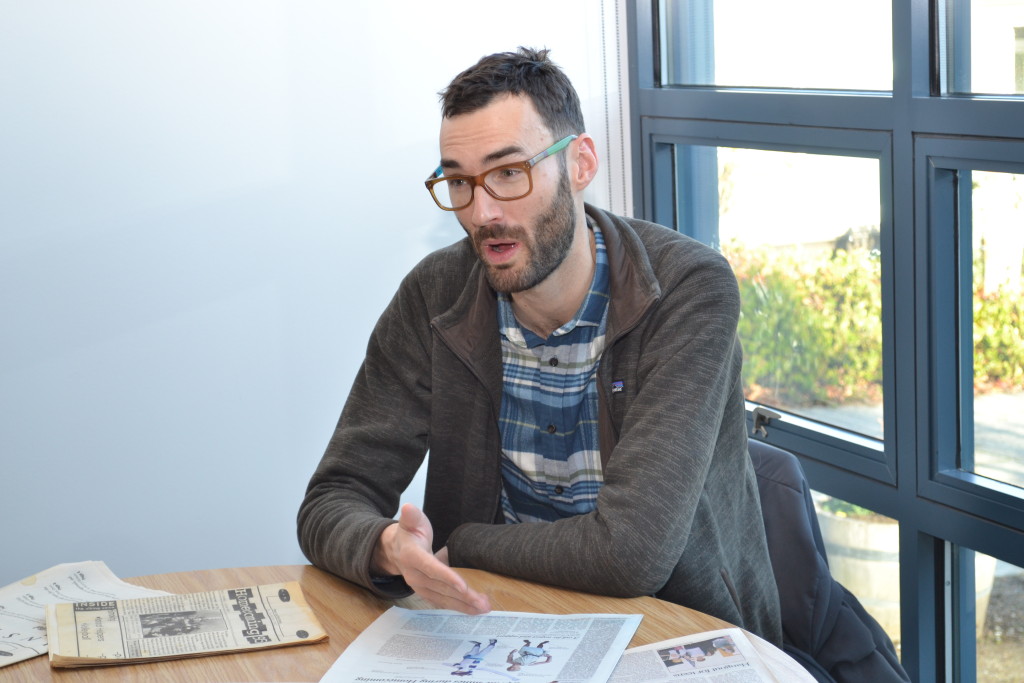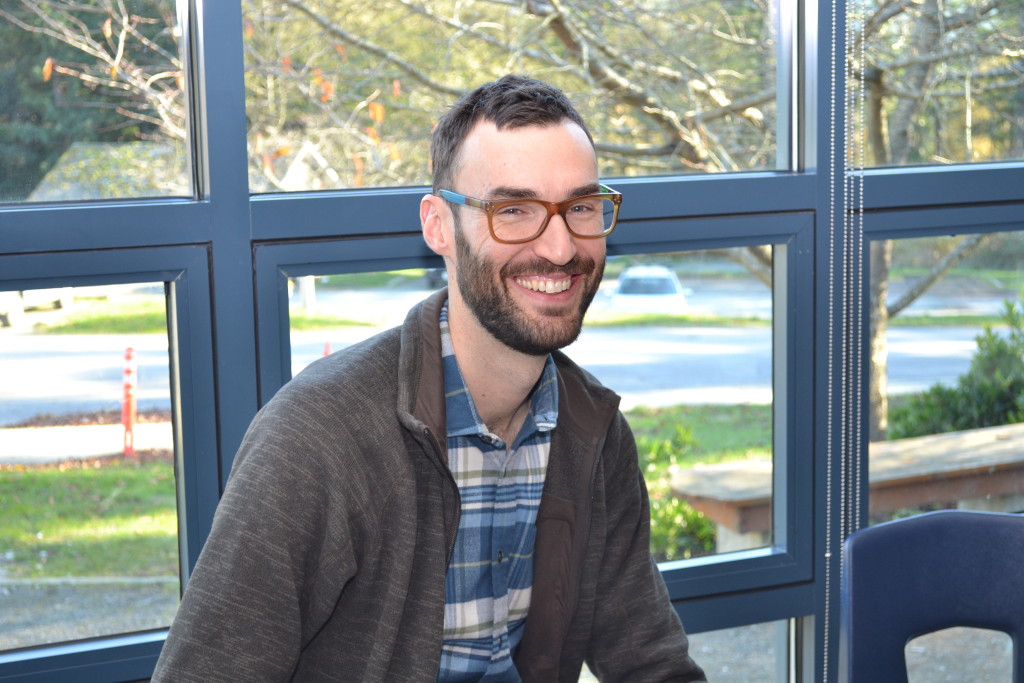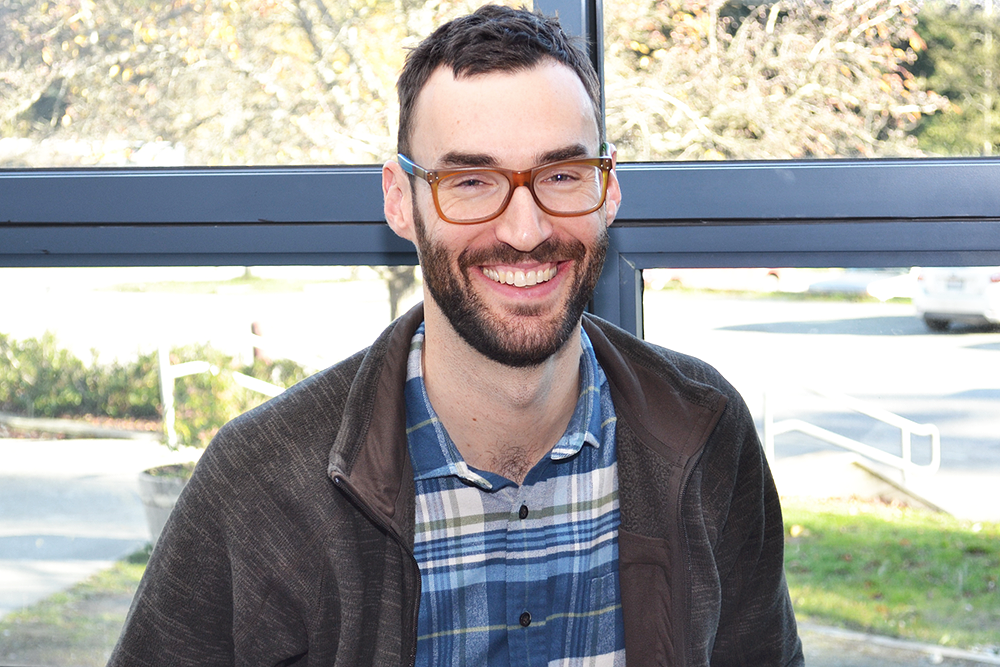Former editor-in-chief of The Viking Voice and current design partner at Google Ventures, Jake Knapp is self-described as one of the tallest designers in the world. As former editor-in-chief from 1995-1996 and long-time newspaper member during high school, today Knapp often uses the communications skills that he learned during his time at The Viking Voice in the Real World. Working in software design, Knapp comments that newspaper is the “perfect education” for his line of work.
Knapp works at Google Ventures in the Real World. Google Ventures is “kind of” a part of Google, but less so now due to “the Alphabet thing,” in Knapp’s words, referring to the breakup of Google in administration. The company invests in around 300 companies such as Uber and Medium, many of which are related to healthcare and technology. “My job is to help companies we’ve invested in — in designing their products, and [helping] when they have questions. We work with them together for a week. We’re gonna create something really fast and we’re gonna show it to people.” Knapp compares the process to the night before sending the paper to The Islands’ Sounder for print, deemed “Hell Night,” during his run as editor-in-chief. Today, it’s only known as “Print Committee,” which is decidedly “not as cool.” Knapp elaborates on the process, known as a “sprint”: “For instance, I’ve done that with Medium a couple times. We go in and work with them for a week on some new idea they want to test. We’ll make a prototype of it and test it with their customers. That’s what I do over and over again, work with these different companies and find out what they’re working on — super fun because I kind of geek out on all the technology things they’re doing.” Knapp is currently working on a book that is due in March discussing the five-day process of the sprint, a flow developed at Google Ventures.
Knapp started working on the school newspaper in eighth grade. “They had just gotten a scanner and you know, nobody knew how to use it so I got the job,” remarks Knapp. “I was like, ‘Oh yeah, cool, I’ll do that!’” From then on Knapp rose through the ranks by learning to use Photoshop. On the broad question of ‘how he got started,’ Knapp details the process, “I started working on the newspaper in the eighth grade because I was really interested in computers. Maybe I did a little writing in eighth grade, but I don’t think so. I just loved working on the newspaper. I got super into writing and design, so it was just this great combination of all that stuff.”
Considering the process of laying out the newspaper today, our “Hell Night” pales in comparison to the 90s’ “Hell Night” of layout. As one might imagine, the current 2015 tech lab is equipped with relatively state-of-the-art Macbooks with programs used to create finished products electronically, such as InDesign. During Knapp’s run, print layout was an arduous process running until the “wee hours of the morning … probably because I’m crazy.” Although technology mimicking current programs such as InDesign existed, the computer lab then was “just a row of Windows computers with CRT monitors,” at the end of which sat a single Mac with a layout program. “Everyone would write their stories in Word, put them on floppy disks. I would sit at the end there and lay out stuff and edit stuff. People would print out their stories and I would write on it with a pen, and in the end people would have to save it in a format you could read on a Mac. That was really tricky,” Knapp describes. The use of floppy disks shows how different the process was in the ‘90s.
It gets more “ancient,” says Knapp, “We had this big glass table and a hot wax thing. It would take a super long time. So we’d print it all out and then cut them with an x-acto knife. [Comics] would be hand drawn and then we cut it out. The hot wax thing was like a ruler and the table was lit from the back. We’d have sheets of those, we had a grid and you’d stack it all up. Then you had to physically take those to The Island’s Sounder. And they sent them to the printer. It was a separate thing, but they went to the same printer. One time we printed with another color … black and blue. Full color would have blown my mind now.”
It’s no secret that today’s The Viking Voice relies on humor, especially in the satirical section and within our staff acknowledgements. Twenty years ago, however, the Voice had much more freedom in its ironic and controversial comments, sans fear of lawsuits, advertising, or loss of readership. As an insert in The Islands’ Sounder in the present day, the Voice enjoys a wide range of readers and distribution throughout the islands. In the past, however, the newspaper was limited to readership among the student body and the newspaper staff. “The [readers] we cared about were us. We enjoyed it, you know, it was chock-full of inside jokes. The whole thing was just kind of making fun of each other. We read it and if other people read it that was great. We’d get ‘em printed out and then we’d have to walk down to Teezer’s or whatever and put them around, but realistically it was just students.” Headlines such as “Where’s the Beef?” were featured on the old newspapers Knapp brought along for our interview, even accompanied by a photoshopped picture of a cow inside a frying pan. Controversy was never quite stirred during Knapp’s time due to low readership and the inability to know who actually read the stories: “it was much harder to [know who read stories]. I’m embarrassed to say that we were never able to poke people into controversy although we tried. We really tried to be obnoxious.”
One of Knapp’s most prominent accomplishments for The Viking Voice was the implementation of an online edition. Although not many had internet access and the newspaper published articles attempting to explain to students what the “World Wide Web” even was, Knapp and his friend Ian decided to put it online anyway. Not many read it. “I’m not sure anyone did. Not that many people even had internet access, so probably mostly me,” laughs Knapp. “The URL for it was my friend Ian’s account. The school didn’t even have a website. We were like, ‘we have these text files. We could just put these in HTML, and put these on the internet. We should just do that. We have photos.’ I remember getting really into setting it up, but it was mostly just for us.”
Discussing how newspaper skills have followed him in life, Knapp can comment easily on how much newspaper has truly lent him, particularly in his field. “The stuff I worked on doing the newspaper turned out to be the most useful stuff in my career. It wasn’t what I studied when I went to college, like painting. But I was always really interested in computers and really interested in layout. So I ended up working at Microsoft and then at Google, so the work that I do is software design. It’s very similar, lot of writing and a lot of layout and a lot of communicating stuff.” Writing upcoming his book similarly reminded Knapp of organizing the hierarchy of information and where content should be placed in writing. In his book’s acknowledgements, Knapp recognizes newspaper and his journalism teacher at the top of the list of acknowledgements as having a large impact on him and his career. Creating a finished product from scratch and the process of creating made a significant impression on Knapp, “You know, I think that the really cool thing about working on the newspaper is that you get to create a whole thing, and it involves lots of different skills and coordinating people on the team and then you produce this finished thing and put it out in the world and some number of people read it, and that sounds really simple. I took it for granted at the time. But it’s actually really unique. There’s not that many things in high school you can do where you make a thing and then put it out in the world. The making of the thing is pretty cool. Once you have that experience under your belt, like … I know how to get a group of people to work together and make something and make sure that it meets my bar and then you hear a little bit, you start to understand what people think when they read it and you can watch them read it, see what they skip over and it’s just really cool. For me, it was a great foundation for making software and working on products. Working with teams of adults, I felt like when I got out in the real world that this is not so unfamiliar to me.” In other words, creation is an essential part of development and high school newspaper is an excellent foundation for developing basic creative skills. A finished product solidifies the enjoyment of the creative process. “Anyway, I don’t know,” says Knapp.



